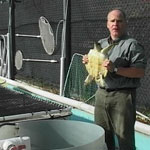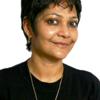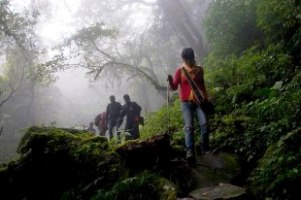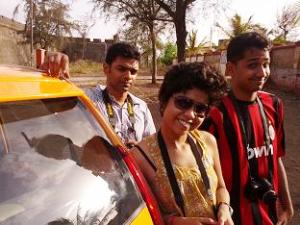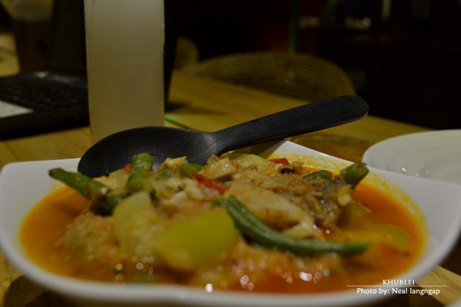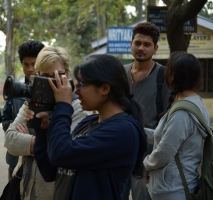More than non-fiction, for me the world of fiction has always held more fascination. But I ended up writing a non-fiction book for the second time.
Truth is often stranger than fiction, to repeat a clichè. Even in my wildest imagination, I could not have come up with some of the poignant and hair raising stories of survivors of the communal riots of 1992-93 in Mumbai or the narratives of pain and longing.
In 2006 when I decided to research the lives of people affected by the riots in Mumbai after the Babri Masjid was demolished on December 6, 1992, I had no intention of writing a book. It was a short term Sarai - CSDS fellowship and for six months I spent most Sundays and all my free time meeting people whose lives had changed after two spells of the bloodiest riots the city had ever seen in a 100 years. Nearly 1,000 people had died, thousands had fled and the city had become deeply entrenched in communal mire.
The riots established the Muslim clearly as the enemy or as second class citizens, and when the serial bomb blasts rattled the city on March 12, 1993, many nodded their heads as if to say "we told you it was the Muslims all along."
A reporter at that time with The Times of India, I was witness to the stereotypes that were emerging and the hatred of anyone who wrote supporting Muslims - even in my office.
Eighteen years later, when I started the research, my mind went back to those days when the city used to be gripped in a tense silence and its skies were often overcast with black smoke. When I made a presentation as SARAI fellows are expected to, some people suggested the narratives of people I had interviewed would make an interesting book. But I wasn't only happy with the narratives though they were quite substantial and evocative of those times and what people were suffering even now, even if they had moved on with their lives.
I was curious about the city's past history of communal violence and though it has been documented by writers, I wanted to read for myself and the musty archives turned out to be a treasure trove. There was a method in the madness in the way documents were preserved but every request entailed long trips by an assistant into the hallowed crypt where the papers were stored and this took a while on most days.
I only had the mornings to work and it was a frustrating experience, relieved only by excitement of reading the material in the dusty files. I got carried away with the intense detail in the newspaper reports, the police communiquès, the government messages and all kinds of snippets and found that Bombay city was rocked by myriad Hindu Muslim clashes in the last century and starting with the major riot of 1893, there was trouble almost every year with gaps in between.
There were police reports of the riots, inquiry commissions and copies of posers enough to relive those times in vivid detail. At some point I felt, it would be good to publish all this but the question was how to link the narratives and the past history of Bombay city. I didn't think it would work without a proper context for all this. My first few pitches to publishers were disappointing but when Sage agreed to publish the book the way it was I was excited.
While some journalists had followed up on the aftermath of the riots, the victims and the cases, I felt it would be good to put all of this together so that it would be a useful document that would help us remember what had happened and how people were struggling with their lives. It was not over for many of them - some were still fighting cases in court or seeking inquiries.
In addition, I had a put a test Right to Information (RTI) application to demand all the cases against Shiv Sena leader Bal Thackeray - some were withdrawn and the court had acquitted him in one case.
After an eight year battle, the then chief information commissioner Suresh Joshi ruled in my favour and I did get some of the cases which were filed against Mr Thackeray and how the home department did not till now, give permission to the police to prosecute him under section 153 A of the Indian Penal Code- for hate speech. I had to squeeze this in as an appendix in my book and my publisher was kind enough to include it at the very last minute.
I hoped by putting all this in the public domain I would get people to remember what went horribly wrong in those times, the violence, the injustice and the wretchedness and inspire them to work towards ensuring it won't happen again.
This is the 20th year of the demolition of the Babri Masjid and there are plans to have events to commemorate it in different ways. Everyone is conscious that remembrance must not be a ritual but something that helps us to reinforce our will to eliminate hatred and violence.
Again I thought that my book would help in understanding the violence of those days and what happened to ordinary people. Many were poor, and still eke out a very difficult existence.
The city took a severe beating - its cosmopolitan image was all but shattered and the divide between Hindus and Muslim was reinforced. New ghettoes sprang up outside Mumbai city limits and there too the politics of division emerged. Alienation, insecurity and fear had come to stay in the City of Gold and every bomb blast after the riots gave credence to the widespread belief that Muslims were terrorists. In fact, many of them were picked up from the very ghettoes they had escaped to after the riots.
The riots left bitterness among the people and as a city we have never healed really. We continue to stumble from one act of violence to another and gloss it all over by saying we are maximum city, unbreakable Mumbai. My book and the research show that it not the case. By sharing the stories of the people and the attitudes towards Muslims, the book depicts a picture of a society that is closed and prone to quickly assimilating stereotypes, instead of questioning what the state and the right wing forces are doing.
While I started out rather hesitantly, I have to say that the book acquired a momentum of its own and till the last minute there were additions, explanations and providing an overall context too took a lot of time. I often had doubts along the way if all this would work to creating something useful.
I have lived in the city since 1975 and watched it change and I don't mean the explosion of people and the urban sprawl. In the race for space, jobs and making it, there is a process of alienation and insecurity that is gripping it. In the book I have also mentioned how some people are making efforts to build bridges specially in the suburb of Jogeshwari which has seen communal violence since the 1960s. The book ended up for me as my understanding of the city which has given me so much and how it is falling apart before my eyes.
Find us on facebook: facebook.com/TheThumbPrintMag










